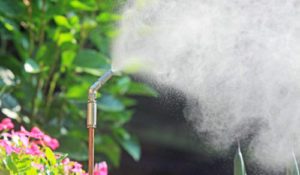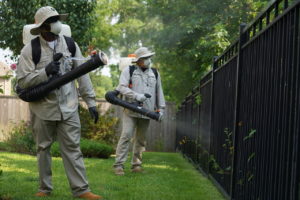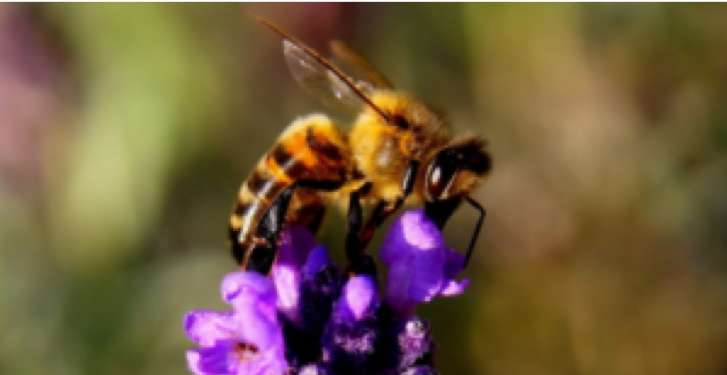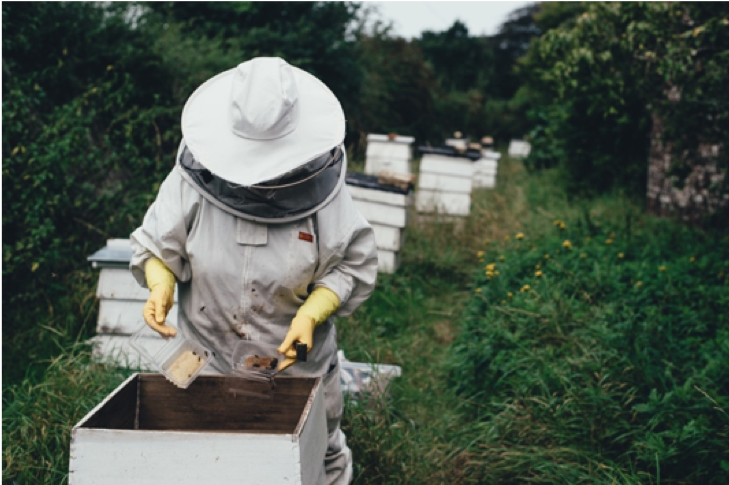What is a Mosquito Misting System
 Controlling mosquitos in your property is based very much in science. However, choosing from the many mosquito control options and applying them can be somewhat of an art. Mosquito Barrier Treatments are custom applications, performed by a licensed pest control technician, that conform to the intricacies of each individual property. They take into consideration the mosquito pressure from outside of the property, breeding areas within the property, and vegetation and landscaping in and around the property; all with consideration of the areas of human activity where the mosquitoes need to be controlled.
Controlling mosquitos in your property is based very much in science. However, choosing from the many mosquito control options and applying them can be somewhat of an art. Mosquito Barrier Treatments are custom applications, performed by a licensed pest control technician, that conform to the intricacies of each individual property. They take into consideration the mosquito pressure from outside of the property, breeding areas within the property, and vegetation and landscaping in and around the property; all with consideration of the areas of human activity where the mosquitoes need to be controlled.
Some properties seem to be better suited for Mosquito Misting Systems. It is estimated that about 5% of the properties in the NW Houston and S Brazos Valley area may actually get better mosquito control from one of these systems. Many of these properties have smaller back yards with little or no barrier to adjacent properties by either vegetation or privacy fencing. A good example is a golf course property, where there is nothing between the vast expanse of the course and the home.
Like the Mosquito Barrier Treatments, installing a Mosquito Misting System is an art. There has to be consideration for future vegetation growth, prevailing winds, times and areas of human activity, and locations of areas of high mosquito pressure. These systems are a much more permanent option so carful design is a must. Once the system is installed there have to be decisions on misting times and durations, to provide the greatest impact to the mosquito population with as little pesticide use as possible. It is recommended that a licensed pest control technician design, install, maintain, and fill your mosquito misting system.
What is a Mosquito Misting System?
Simply it is a device that stores a product used to control mosquitoes. It has a pump that is controlled by a timer. At preset times of the day, a diluted solution of the pesticide is pumped through small tubing to areas within a property and dispersed through misting nozzles creating a very fine mist. This mist lands on areas where mosquitoes live, killing adult mosquitoes. These systems can also be designed and installed to control spiders around the eaves of your home.
I have a Mosquito Misting System and I’m still getting bit. Why?


There are times when some larger properties will benefit from regular Barrier Treatments that can treat areas outside of where the misting system is. This combination treatment can certainly take care of those pesky mosquitoes and allows us to control your biggest source; standing water.
Should I have a Mosquito Misting System installed or have Mosquito Barrier Treatments?
The only way to know is to have a Licensed Pest Control company evaluate your property. Mosquito Joe provides Mosquito Barrier Treatments and installs and maintains Mosquito Misting Systems and can evaluate any property as well as give the pros and cons of both.
Which option is more expensive?
That’s a tough question. There are so many variables involved that there is not one answer that fits every property.
A misting system has a greater up-front cost. Typical systems for smaller properties average from $2200 to $2800 to install. Fills and maintenance make up the ongoing cost and generally occur every couple of months depending on the number of nozzles, number of mist cycles a day, and the length of each mist cycle. Mosquito Barrier Treatments are a service and require no up-front costs. Treatments are applied every 3 weeks (2 weeks for botanical and all-natural services) by a pest control technician, and include larvicide application in standing water, organic applications to flowering plants and vegetable gardens, and a barrier spray to all foliage. Mosquito Joe will always provide a free quote for either and can help you decide what is the best option for your property.




